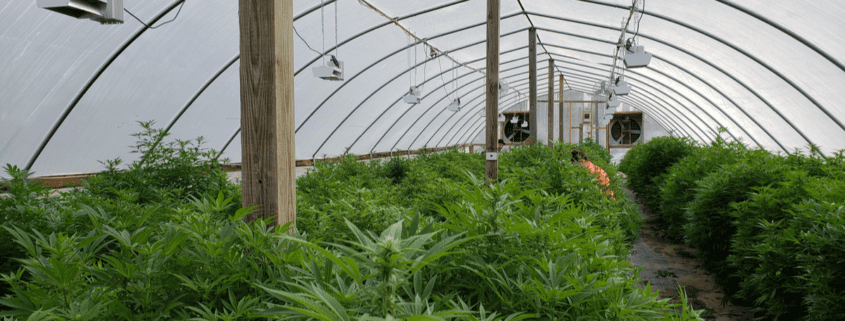Why the Industrial Hemp Market is Expected to Boom in the Next 5 Years
Industrial hemp, a highly regulated crop across the world, has over 25,000 recorded uses including the production of paper, clothing, food, fuel, and building materials. The industry has seen a boom since the enforcement of the 2018 Agriculture Improvement Act was passed in December of that year. In fact, the Realtors Land Institute reports that the industrial hemp market is currently worth $620 million, and within the next two years, this value has the potential to expand to $5 billion. In addition to the hemp market’s massive opportunity for growth, commodity prices for traditional crops have plummeted to 30-year lows, driving greater interest in hemp within the agriculture industry. Industrial hemp investing also presents a rare opportunity for investors to partake in a new and emerging market.
Read ahead to learn about factors that are contributing to the anticipated “hemp boom” within the next five years and what this growth could mean for investors seeking to diversify their portfolios.
Removal from the Federal Government’s List of Controlled Substances
The enactment of the 2018 Agriculture Improvement Act was the catalyst for removing hemp from the Federal Government’s list of controlled substances. Prior to the passing of this legislation, all cannabis was considered a Schedule I substance and therefore regulated by the Drug Enforcement Administration (DEA). Additionally, before the act was passed hemp could not be supported by agricultural grants, crop insurance, or access to the national banking system. Without backing in these key areas, the risk of investing in industrial hemp was unusually high, and investors were uninterested.
After the bill was passed, industrial hemp was restored to nationwide legal production for the first time since World War II, creating opportunities for investing in an industry anticipated to more than triple within the next 5 years and to have a combined annual growth rate (CAGR) of 27.2%. For investors, the passing of this law opened the door for more opportunities to diversify their portfolios and to capitalize on the rapidly emerging industry set to reach the multi-billion dollar mark by the end of 2020.
Legalized Option for Investing in the Cannabis Market
Although often confused with marijuana, hemp is a completely different type of cannabis and cannot be used recreationally as a drug like its counterpart. The major defining difference between the two is that industrial hemp has been legalized federally while marijuana has not. Therefore, hemp is a much safer alternative for cannabis investors who may be concerned about nationwide legality and the impact that it could have on the industry’s growth. Sixty-eight percent of investors responded to a 2019 KCSA Cannabis Investor Survey that if marijuana becomes federally legalized, they will increase their investment in the cannabis space. However, for investors seeking to hop on the cannabis investment train without waiting to see if nationwide marijuana legalization will occur, industrial hemp investing is a legalized alternative investment opportunity with positive signs of unhindered growth.
Demand and Market Penetration Opportunities
As previously mentioned, industrial hemp has a wide range of uses including the production of paper, clothing, food, fuel, and building materials. With its assortment of applications, hemp is a versatile investment that is generating a lot of demand and market penetration opportunities, which can lead to big opportunities for forward-thinking firms and strategic investors. Fueled by the growing demand of CBD oils, hemp-based food products, and personal care products, the hemp markets popularity has strengthened. The sales volume of hemp-related products proves that market is hungry for this crop. In 2018, personal care products made up almost 1/4 of hemp-related sales (about $163 million), food and CBD products each made up 19% of sales, with textile representing 14% of the market (totaling close to $100 million). As the hemp market’s boom continues, so will the market penetration opportunities for investors.
Portfolio Diversification
When managing a portfolio, diversification is important because it helps reduce the volatility of the portfolio over time by ensuring that the amount of exposure to any one asset is limited. As the hemp market booms, some investors seeking to diversify their portfolios are looking at this market as an alternative investment opportunity. With 49% of investors open to or already investing within the cannabis industry but as few as 10% deeming marijuana as a safe stock investment, industrial hemp can be considered a less risky option for those interested but uncertain about investing in such a controversial industry.
Even in its infancy, hemp has swiftly become a valuable commodity on the stock market. Although all investments contain considerable risk, investors are capitalizing on the 2018 legalization of industrial hemp and the market’s rapid growth and expansion. The industrial hemp market offers exciting new opportunities for investors who are seeking alternative investments to diversify their portfolios. Because this emerging hemp market is predicted to be sustainable, hemp investors are now backing companies with structured and sustainable models that will support this anticipated growth. With the hemp market’s anticipated boom within the next 5 years, the interest of investors will continue to grow too.




